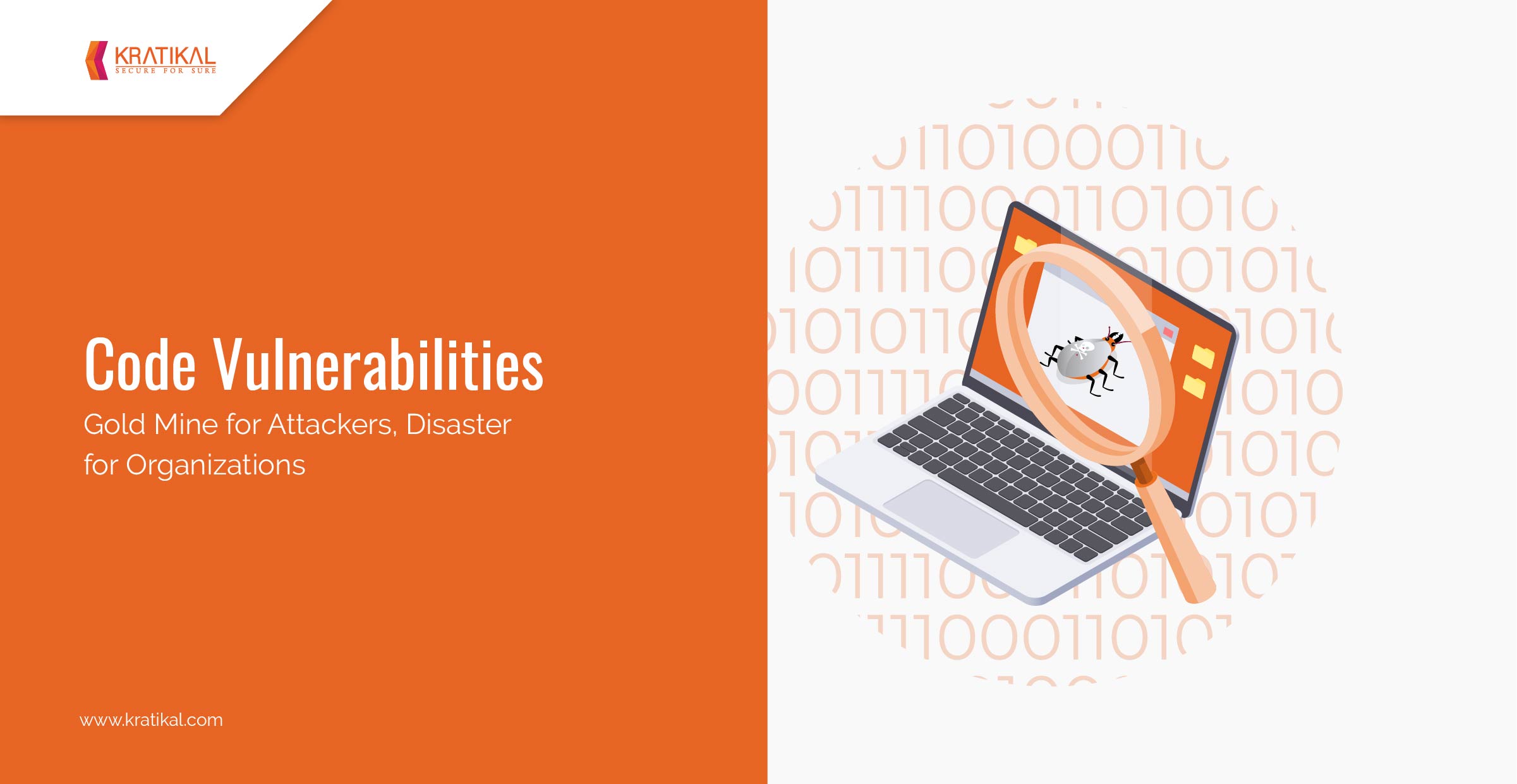The foundation of every software, application, or website is its code. These days, every organization and business around the world uses a wide range of applications and software for everyday operations. A flaw in an application’s code can create several problems for all those using it. Code vulnerabilities in your website or application can leave your entire organization susceptible to severe cyber attacks, creating serious security and privacy issues.
Table of Contents
Get in!
Join our weekly newsletter and stay updated
What is Code Vulnerability?
The term code vulnerability is associated with your software’s security. It is a weakness or a flaw that can potentially lead to the compromise of the software’s security. Vulnerabilities in code may be exploited by malicious actors to extract sensitive data, tamper with your software or erase everything.
This can have some grave consequences like the disruption of everyday operation, loss of business, damage to company reputation and loss of customer trust. Successful cyber attacks also often lead to legal battles and heavy fines levied by various regulatory authorities.
Top Code Vulnerabilities to Watch Out for
The VAPT team of Kratikal, a CERT-In-empanelled security auditor, has conducted source code reviews for numerous organizations around the globe, wherein experts have examined and assessed codes of several applications and websites. Here is a list of the top 5 coding vulnerabilities they detected.
#1 Eval Injection
Referring to the improper neutralization of directives in dynamically evaluated code, Eval Injection is one of the most critical code vulnerabilities that occurs when a malicious actor can control a part of or all of an input string fed into an eval() function call. The PHP eval() function is a quick method to execute string values as PHP code. However, when it is used with unknown inputs, it can leave the code vulnerable to injection attacks.
Eval Injection is an injection technique, using which a malicious actor can inject a custom URL into the PHP eval() function. Successful code injection can be used to execute operating system commands. This kind of code vulnerability can result in grave data breaches, loss of sensitive information, and unauthorized access to servers.
#2 Cross-site Scripting (XSS)
Counted amongst the gravest code vulnerabilities, cross-site scripting (XSS) occurs when a malicious script, usually in HTML and Javascript, is injected as data where it attaches itself and leads to numerous security issues. The worst part is that these scripts are very difficult to detect as they appear to come from a trusted source. Typically, this is done in codes containing sensitive information like your credit card details or contact information.
Computer programs and software use commands and queries to facilitate communication between their components. If these queries do not have proper encoding, malicious actors can easily tamper with the software. With XSS, an attacker can insert special characters that lead the data to be interpreted as control information for the software. This vulnerability allows certain components of the software to receive malicious commands and perform unauthorized actions.
#3 Use of Hard-coded Credentials/Keys
The use of hard-coded credentials/keys is considered a very insecure coding practice and can lead to critical vulnerabilities. Also called embedded credentials, hard-coded credentials refer to passwords or other sensitive information in plain text (non-encrypted). Often, developers and other users embed hard-coded credentials into code to ensure easy workflow. However, this practice can pose formidable security risks and leaves software susceptible to being exploited by malicious actors.
Hard-coded passwords serve as an easy target for password guessing attacks, enabling hackers to hijack devices, firmware, software and systems. In many cases, the same hard-coded credentials are used across all applications produced by a software development company. So, if malicious actors are able to obtain the default password for one application, they can access all similar applications.
#4 Weak Cryptographic Hash
Hash functions refer to mathematical algorithms that convert arbitrary numbers of bytes of data into a fixed-size byte array. For multiple reasons, coders and developers use weak encryption algorithms and cryptographic hashes these days. But, this is considered one of the biggest code vulnerabilities and can compromise the confidentiality of the data they are looking to protect.
Weak cryptographic hashes can lead to attacks like rainbow table searches. Incorrect use of encryption algorithms can result in the exposure of sensitive data, key leakage, insecure session, broken authentication and spoofing attacks. It is highly advisable to use some of the known weak algorithms like MD5 and RC4.
#5 Use of Standard Pseudo-random Number Generators
Using standard pseudo-random number generators leaves you vulnerable to cryptographic attacks. They leave a software or application susceptible to insecure randomness errors, which occur when a function producing predictable values is used as a source of randomness. Pseudo-Random Number Generators (PRNGs) are designed to approximate randomness algorithmically. PRNGs can be categorized into two types- cryptographic and statistical.
While Statistical PRNGs have useful statistical properties, they produce highly predictable output, making them unsuitable for use when security depends on the unpredictability of the generated values. Cryptographic PRNGs, on the other hand, produce output that is much harder to predict. A value can only be deemed cryptographically secure if it cannot be easily distinguished from a truly random value. In security-sensitive contexts, the use of a PRNG algorithm, which is not cryptographically secure, can be a huge mistake.
Finding Source Code Vulnerabilities
The above-mentioned code vulnerabilities are just a few of the many critical vulnerabilities found in the source code of several applications being used by organizations worldwide. The only way to prevent threat actors from misusing these flaws is by finding the vulnerabilities in the source code of your software before they can.
This can be done by conducting a source code review, wherein a team of experts reviews and assesses your software’s source code for any flaws and weaknesses. This practice can help you identify and fix any existing code vulnerabilities before the hackers get a chance to exploit them.








Leave a comment
Your email address will not be published. Required fields are marked *